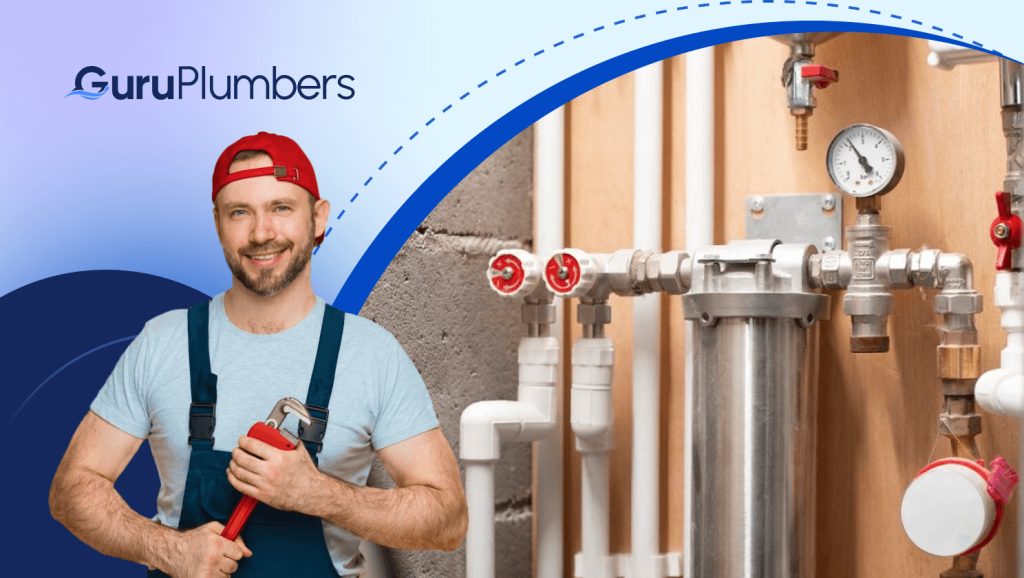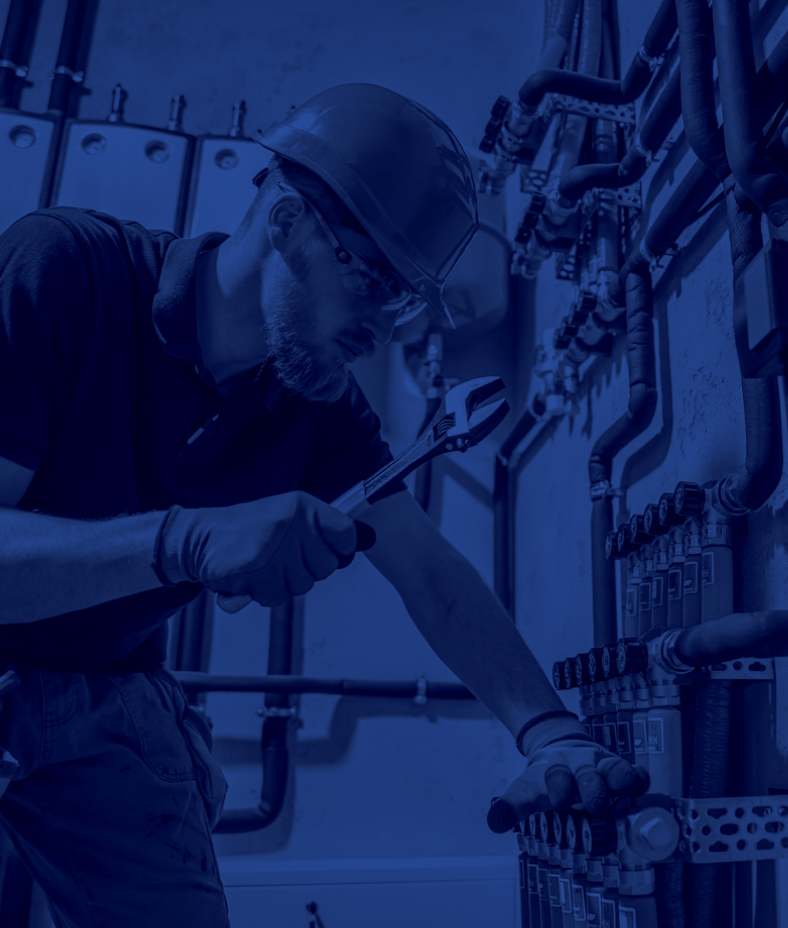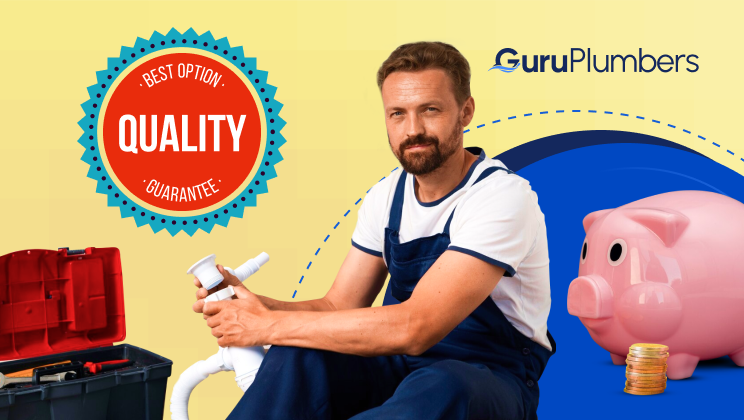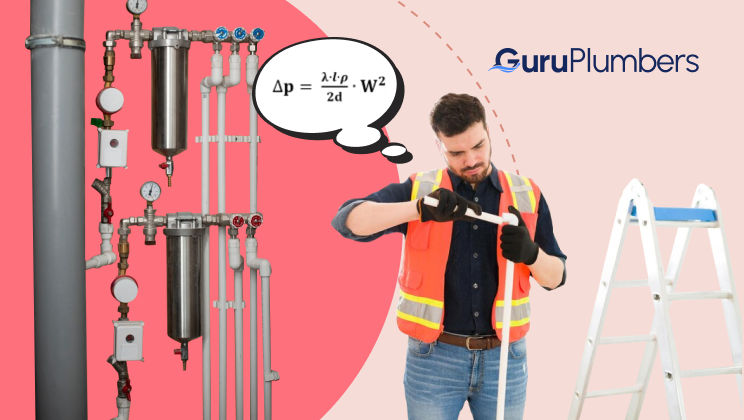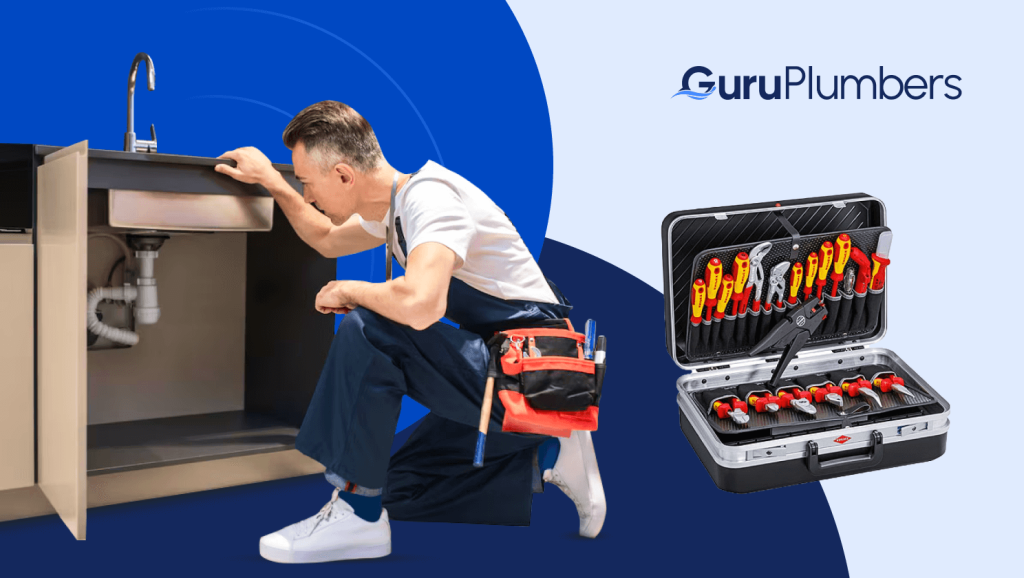Keeping your home’s plumbing system functioning and preventing costly repairs begins with understanding it. A basic knowledge of plumbing components and how they work can help you identify issues early and perform simple fixes.
This guide aims to provide a clear and concise understanding of the essential components and functions of a typical home plumbing system.
1. Basic Components of a Home Plumbing System
Water Supply System
- Main Water Line: The primary conduit through which water enters your home from the municipal supply or a private well. It usually enters your home at the basement or the side wall.
- Water Meter: Measures the amount of water your household uses. It’s typically located near the main water line and helps in monitoring water usage and detecting leaks.
- Water Shut-Off Valve: A critical component that allows you to stop the flow of water into your home in case of an emergency or for repairs. This valve is usually located near the water meter.
Drain-Waste-Vent (DWV) System
- Drain Pipes: Carry wastewater away from sinks, toilets, showers, and appliances to the sewer or septic system. These pipes are designed to prevent clogs and ensure smooth water flow.
- Vent Pipes: Assist in venting sewer gases and maintaining drainage system air pressure. Proper venting is essential to prevent water traps from being siphoned dry, which could allow sewer gases to enter the home.
- Sewer Line: Pipes that convey wastewater from your home to septic tanks or municipal sewer systems. Maintaining this line is crucial to prevent backups and blockages.
Fixtures and Appliances
- Common Fixtures: Include sinks, toilets, and showers. These are the primary points of use for your plumbing system, and each has a dedicated water supply and drainage connection.
- Appliances: Dishwashers and washing machines require both water supply and drainage. Installing and maintaining them properly ensures their efficiency and prevents leaks.
By understanding these basic components, you can better manage your home’s plumbing system and address minor issues before they escalate into major problems.
2. How Water Flows Through Your Home
Incoming Water Supply
- How Water Enters the Home: Water enters your home through the main water line, typically from a municipal water supply or a private well. The water flows through a meter that measures usage.
- Role of the Pressure Regulator: The pressure regulator ensures that water pressure remains within a safe range, protecting your plumbing system from damage caused by high pressure.
Distribution System
- Cold Water Lines: All home fixtures and appliances receive cold water from these lines.
- Hot Water Lines: Hot water lines distribute water that has been heated by the water heater. The water heater is connected to both the cold water supply (to receive water) and the hot water distribution system.
Drainage System
- How Wastewater is Removed: Wastewater flows from fixtures and appliances through drain pipes, eventually reaching the main sewer line or septic system. This process relies on gravity.
- Importance of Proper Slope in Drain Pipes: Drain pipes must have a proper slope to ensure efficient wastewater flow and prevent clogs. A slope that is too steep or too shallow can lead to blockages.
3. Common Plumbing Problems and Solutions
Leaks
- Identifying Common Leak Sources: Leaks commonly occur at joints, faucets, and fixtures, or due to damaged pipes.
- Basic Steps to Fix a Leak:
- Shut off the water supply.
- Identify the source of the leak.
- Use pipe tape or a wrench to tighten connections.
- Replace damaged sections or apply a patch for temporary fixes.
Clogs
- Common Causes of Clogs: Hair, grease, food particles, and foreign objects can cause clogs in drains.
- Methods to Clear Clogs:
- Plunger: Effective for minor clogs in sinks and toilets.
- Snake: A plumbing snake can dislodge deeper clogs.
- Chemical Drain Cleaner: Use with caution for stubborn clogs, following the manufacturer’s instructions.
Low Water Pressure
- Possible Causes: Blockages in pipes, leaks, or faulty fixtures can lead to low water pressure.
- Simple Troubleshooting Steps:
- Check for leaks and repair them.
- Clean or replace aerators and showerheads.
- Inspect and, if necessary, replace faulty fixtures.
- Turn on the main water valve fully.
4. Maintenance Tips for a Healthy Plumbing System
Regular Inspections
- Importance of Checking for Leaks and Corrosion: Regularly inspect pipes, joints, and fixtures for signs of leaks and corrosion. Detecting damage early can prevent costly repairs and significant damage.
Preventive Measures
- Avoiding Clogs: Do not flush items like wipes, paper towels, or feminine hygiene products. Avoid pouring grease, coffee grounds, and large food particles down the drain.
- Water Softeners to Prevent Mineral Build-Up: Install water softeners to reduce mineral build-up in pipes and appliances, extending their lifespan and maintaining water flow efficiency.
Seasonal Maintenance
- Pipes to Prevent Freezing: Insulate exposed pipes and drain outdoor faucets before winter. Insulate pipes or wrap them in heat tape if you live in an unheated area.
- Checking Outdoor Faucets and Hoses: Inspect outdoor faucets and hoses for leaks and damage. Disconnect hoses and store them indoors during the winter to prevent freezing and cracking.
5. When to Call a Professional
Complex Issues
- Signs that a Problem is Beyond DIY Repair: Persistent leaks, recurring clogs, low water pressure despite troubleshooting, and visible signs of water damage are indicators that professional help is needed.
Regular Maintenance
- In order to identify potential problems before they become major ones, a licensed plumber performs annual inspections and maintenance. Plumbing systems can be extended in life and made more efficient with regular maintenance.
Emergency Situations
- What Constitutes a Plumbing Emergency: Major leaks, burst pipes, sewer backups, and complete loss of water pressure require immediate professional attention.
- How to Handle Emergencies Until Help Arrives: Turn off the water main to prevent damage from escalating. Use buckets or towels to contain leaks. Avoid using electrical appliances near water. Contact a professional plumber immediately.
Final Thoughts
Having a basic understanding of your home’s plumbing system can save you time, money, and stress. Your plumbing system will remain efficient and reliable if you recognize common issues and perform regular maintenance. For complex problems and regular inspections, don’t hesitate to call a professional plumber. Taking these proactive steps will help keep your home’s plumbing in top condition.
Frequently Asked Question
Inspect your plumbing system every six months for leaks, corrosion, and other potential issues. Regular checks can prevent major problems and costly repairs.
In case of a leak, turn the water supply off immediately to prevent further damage. Identify the source of the leak and use pipe tape or a wrench to tighten connections. For severe leaks, contact a professional plumber.
Avoid flushing non-biodegradable items like wipes and feminine hygiene products. Dispose of grease, coffee grounds, and large food particles with care. Keep hair and other debris out of drains by using drain covers.
Using a water softener will reduce mineral build-up in pipes and appliances, which will extend their lifespan and maintain efficient flow of water. It’s especially useful in areas with hard water.
Insulate exposed pipes and use heat tape in unheated areas. Shut off and drain outdoor faucets, and disconnect and store hoses indoors. These steps can prevent pipes from freezing and bursting during winter. Read more here.
Call a professional plumber for persistent leaks, recurring clogs, low water pressure despite troubleshooting, visible water damage, and any major plumbing emergencies like burst pipes or sewer backups. Regular annual inspections by a professional are also recommended.
Major leaks, burst pipes, sewer backups, and complete loss of water pressure are considered plumbing emergencies. Contact a professional plumber as soon as possible after shutting off the main water valve.
